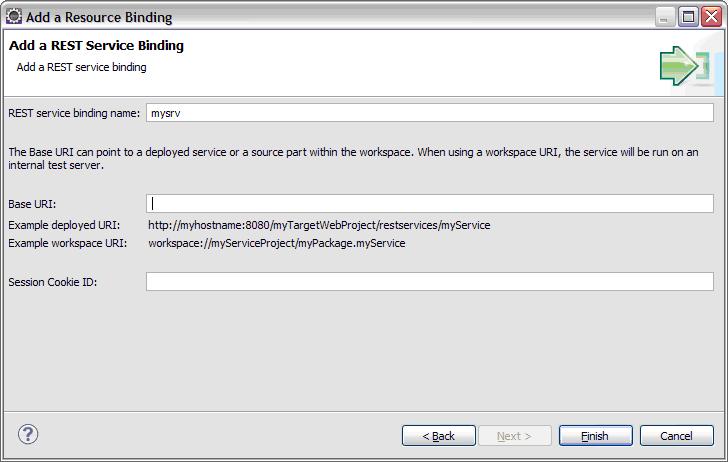Notice: This Wiki is now read only and edits are no longer possible. Please see: https://gitlab.eclipse.org/eclipsefdn/helpdesk/-/wikis/Wiki-shutdown-plan for the plan.
EDT:Resource Binding Services
Revision as of 15:14, 20 January 2012 by Unnamed Poltroon (Talk)
If the purpose of a resource binding is service access, the definition is called a service binding, and the main detail is in one of three formats:
- If the service is deployed on an application server, you can specify a Universal Resource Identifier (URI). The URI begins with the
http:orhttps:prefix (not shown) and continues with a string like this one://myserver:8080/myproject/restservices/myService
- Although you can run the deployed service during an EGL debugging session, the EGL debugger does not step into the service.
- If the service is available in your workspace and was written in EGL, you can use a workspace URI, which is an identifier that points to a workspace location. Here is an example:
workspace://mySourceProject/servicepackage.myService
- In this case, the URI is useful only at development time, and an internal Test Server enables you to debug the code.
- If a Rich UI application includes a Service type that will be deployed as a dedicated service, an Internal Test Server enables you to debug the code. In this case, the EGL deployment descriptor is never used. The only binding detail is the DedicatedService annotation, which is part of the service-access variable declaration.
If a Service part namedMyServiceTypeis a dedicated service, the declaration might be as follows:myService MyServiceType {@DedicatedService}
Defining a service binding in the EGL deployment descriptor
At this writing, you can bind to a REST or EGL REST-RPC service. The distinctions among the service types are explained here: http://www.eclipse.org/edt/papers/topics/egl_soa_overview.html.
To define a service binding in the EGL deployment descriptor, do as follows:
- In an EGL project, expand the EGLSource folder and double-click the deployment descriptor, which has the file extension .egldd.
- Click the Resource Bindings tab. The Resource Bindings Configuraton page is displayed.
- Click the Add button and select REST Service Binding. The Add a Resource Binding page is displayed, as shown here:
- In the topmost field, specify the binding name. You can reference that name in the Resource annotation in your code.
- In the Base URI field, specify a URI, which might be a workspace URI:
- If you are accessing an EGL REST-RPC service, specify the complete URI.
- If you are accessing a third-party REST service, you can decide to include only high-level details and to supplement them with values that are stored in an Interface part. For more specifics, see the following help topic: "Creating an Interface part to access a REST service."
♦ Next: Database bindings
♦ Previous: Resource binding introduction
[[Category: EDT]]

